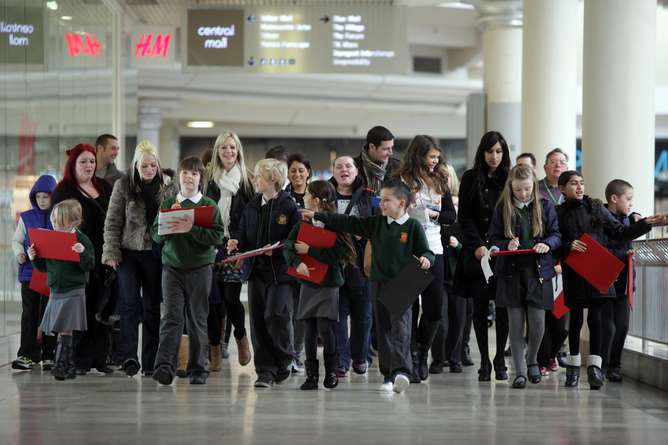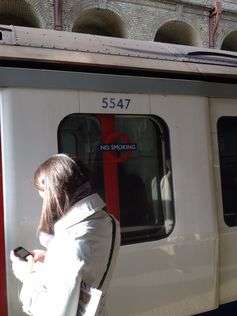How to get children to want to do maths outside the classroom

Ask adults about maths and they'll often say: "I was never very good at maths at school". How can we stop young children growing up today saying the same thing?
It's important to be inventive when teaching children maths in primary school, in order to get them hooked early and want to keep doing more maths when they get home. In art and English lessons it's easy for children to have ownership – "this is my piece of art" or "these are my thoughts in this essay". It might seem that in maths this is harder to do, if not impossible. But ownership of maths is important so that children and adults can also say – "this is my maths".
One way to develop ownership is to take children on a "maths walk", opening their eyes up to the world around them. It's like a treasure hunt, with the treasures hidden all around us waiting to be observed.
Going on a maths walk
A typical walk consists of a sequence of designated sites along a planned route where students stop to explore maths in the environment. This makes maths come alive for children.
Anyone can create a walk that targets a range of mathematical understanding. Some questions that can be used to help switch on your "mathematical eyes" include:
- Find three objects which have one line of symmetry
- Find an object with rotational symmetryFind a repeating pattern
- Find an object that is approximately one metre tall
Alternatively, the maths walk's purpose could be to introduce children to places where mathematics can be found in our everyday world. These can include locations which have scientific, historical, literary, engineering, or business significance. These walks should invite all children, irrespective of their achievement level, to participate successfully in problem-solving activities and gain a sense of pride in the mathematics they create.

I recently developed a maths walk to celebrate 150 years of the London Underground, that could be used at any of the 270 tube stations in London. Here is one of the questions from the "Tube puzzle walk" called "number cruncher":
Each underground train carriage has an identification number. These numbers can be three, four or five digits long. Similarly, each labyrinth artwork is numbered at the bottom right-hand corner. Your challenge is to make a calculation equalling the labyrinth number using only the digits of your train carriage number.
For example, if your carriage number is 5547 and the labyrinth number is 22 then you could create the following calculation: 4 × 5 + 7 – 5 = 22
If your carriage number is 21060 and the labyrinth number is 63 then you could create either one of the following calculations:60 + 2 + 1 or 26 –1 = 2 × 2 × 2 × 2 × 2 × 2 – 1
Making maths stick
Motivating learning is one of the keys to creating a positive experience for all learners. It was not until I came across research that looked at the benefits of "transfer triggers" in education that I realised the power of teaching mathematics using real world examples.
Emotion is also very valuable for young children's mathematical memory. One engaging technique is called "episodic learning" – creating a moment in a child's mind upon which to build learning. Research shows that these types of learning moments can help to develop stronger and longer lasting memories, which help cultivate learning.
There are lots of other things you can do with children outside school that can help their understanding of mathematics. Most of these episodes do not even seem mathematical to the children, as maths is so deeply linked to our daily life.
Card, board and dice games develop number skills, logic and strategy. Games help develop mathematical understanding and are fun for the whole family. Cooking together also teaches children about weights and measures. If a recipe is for two and you want to make it for five, you need to think about ratios. Cooking also involves all sorts of non-standard units of measure such as teaspoons, tablespoons, millilitres, pints and cups. Having conversations as you cook enhances children's understanding of these units.
Travelling in the car can also bring possibilities for mathematical games such as counting cars of a certain age, colour or type that you pass. Children can learn about probability with this activity, as you may be more likely to spot silver cars than yellow.
At a young age, mathematics learning is about giving children confidence and a willingness to try. It is also about explaining mathematical ideas from an inventive perspective that encourage children to take part, think about maths differently and associate what they are learning with their everyday lives.
Source: The Conversation
This story is published courtesy of The Conversation (under Creative Commons-Attribution/No derivatives).
![]()



















